June 17, 2025 | 21:37 GMT +7
June 17, 2025 | 21:37 GMT +7
Hotline: 0913.378.918
June 17, 2025 | 21:37 GMT +7
Hotline: 0913.378.918
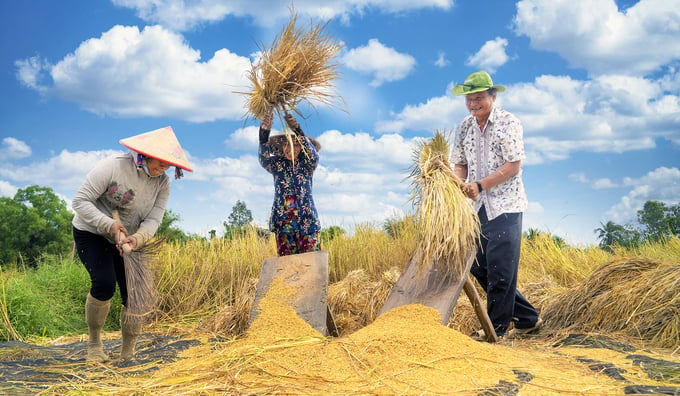
Le Quoc Viet threshing rice with the villagers.
Only by coming here was I able to see some images of Vietnamese’s wet rice civilization. That noon, we ate some Ba Trang rice with snakehead fish sour soup right next to the seasonal crop of farmer Le Quoc Viet. His house was near the asphalt road in Minh Luong town (Chau Thanh district, Kien Giang), cars were noisy all day and night. But just walking a few dozen meters deep into the side road of the house, a completely different world opened in front of my eyes. The smell of the countryside and the cool breeze on the rice fields brought me back to my childhood. I took off my shoes and waded barefoot into the fields to feel the soft and cool mud caressing my skin. I was immersed in the symphony of birds chirping, frogs croaking, fish splashing, and locusts snapping their legs…
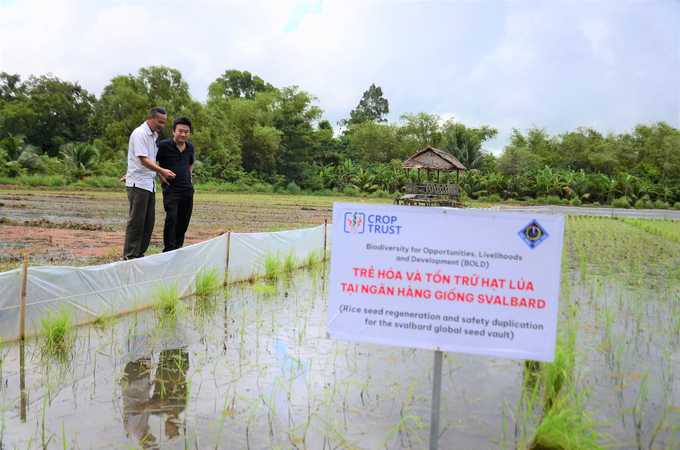
The field transplanting 800 old rice seeds for rejuvenation and preservation. Photo: Duong Dinh Tuong.
Viet pointed at the field area nearby. It was used for transplanting 800 old rice varieties to have them rejuvenated after a long time sitting in cold storage at the Mekong Delta Development Research Institute (Can Tho University). Reaching out to the newly transplanted rice, he smiled, bright and innocent like a lush green seedling.
Viet spent his childhood in the rice fields. At the age of 13, his father left the world, so he was forced to master the art of farming. At the age of 17, he was able to thresh a thousand sheaves of rice every day, equivalent to 1 ton of rice. Turning 18 years old, he majored in horticulture at a university and later went to work for the government, leaving the seasonal rice behind. The memories of seasonal rice were also pushed aside.

Every rice plant is precious. Photo: Duong Dinh Tuong.
Back in the late 70s of the previous century, the policy of switching from traditional seasonal rice to short-term Than Nong rice occurred in the context of constant floods, brown planthoppers raging and then a fierce border war. Such a rich delta like the Mekong Delta, but there was not enough rice to eat, so the land was converted forcibly. However, during the implementation process, due to the “achievement disease”, every locality tried to complete its targets, even using force to achieve its goals.
The change between the old and the new did not go well. The government forced people to use short-term rice varieties, but people mixed in some long-term rice. During the crop season, the Than Nong rice was harvested first, and the seasonal rice was harvested later. When officials asked, people replied that they sowed the same seeds. The mixing of old rice varieties with Than Nong was the way people clung to old traditions, but it only lasted a few years.
When Vietnam became Secretary of a commune and then returned to the district Office of Agriculture and Rural Development, the inadequacies in rice production based on output were increasingly visible. In every rice crop, chemicals are sprayed everywhere. The rice harvest was successful, but the high yield only added to the burden because of the low selling price. At the age of 50, in one monsoon season, he suddenly remembered the beautiful days of his childhood. "Should I plant seasonal rice again just like old times, so that my children and grandchildren can have some feeling for our tradition?", he thought to himself.
The idea kept growing stronger, until when he participated in the Mekong Delta Rice Festival in Soc Trang in 2011. At every booth he went to, he saw high-yield rice varieties on display, but when he stopped at the booth of the Mekong Delta Development Research Institute, he saw a list of old seasonal rice varieties. His memories flooded in, full and clear as if they never left. He knew that he had to plant seasonal rice. He couldn't bear it any longer.
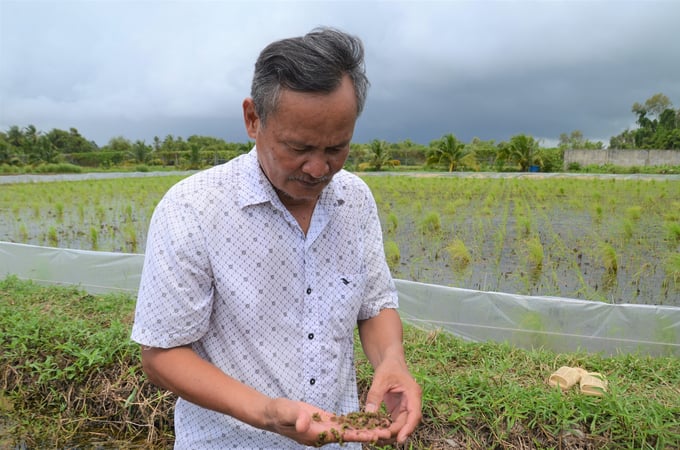
Le Quoc Viet taking a look at the azolla bunch in the field. Photo: Duong Dinh Tuong.
Making the first step, Viet set out to collect old agricultural tools. Some remained, some were lost. If something was no longer there, he asked the elderly and then hired them to restore it. After many years, a collection of tools for plowing, harrowing, cutting, threshing, milling, and pounding was assembled, but it was not complete.
In 2017, he started building a fence around his family's 2.5 ha of land, building a house to introduce seasonal rice culture with a budget of VND 3.6 billion, now there is still more than VND 1 billion unpaid. Fortunately, it's all borrowed money, so there was no interest.
After that were months of him searching for seasonal rice seeds. He asked his friends at the Office of Agriculture and Rural Development but there was none left. He met with old farmers in the area to ask what varieties were grown at that time and then went to Can Tho University to ask for traditional seasonal rice varieties such as Ba Bui, Chim Roi. He found 5 varieties, with each variety having roughly 200 seeds.
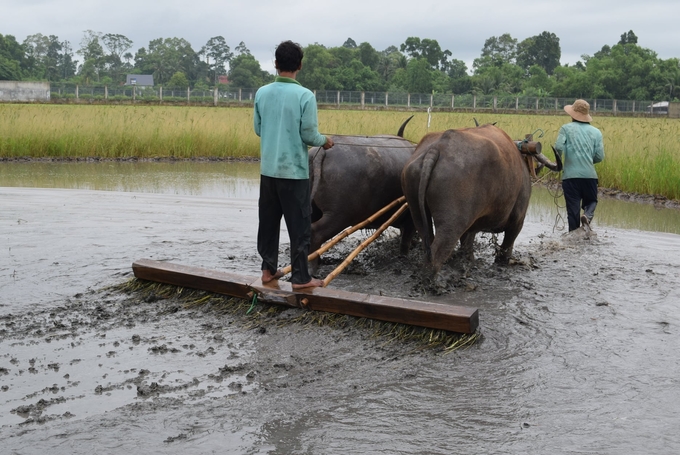
Preparing soil the old-fashioned way. Photo provided by the character.
When he brought the seeds back home, only Ba Bui and Chim Roi survived, mice ate the others. But the hardship did not stop there. “Everyone around me grew short-term rice, that's why the birds invited the whole province, and the rats invited the whole district to come and destroy my field. In 2018, I sowed 1.5 ha but only harvested a few hundred kilograms of rice, just enough to make new seeds. In 2019, I sowed Ba Bui and Trang Tep Vang and gave the seeds to growers so they could plant and I would buy them back. But the rice produced was unsellable”.
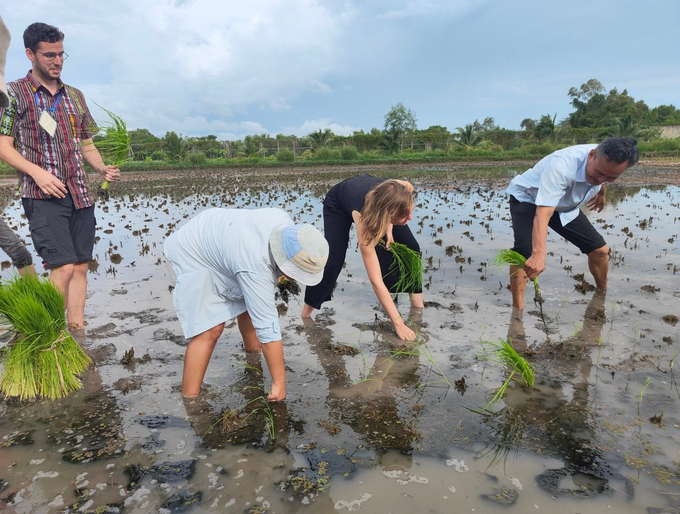
Tourists experience rice planting with Viet. Photo provided by the character.
Viet not only cultivates seasonal rice but also a cultural life associated with seasonal rice with things like listening to toads and frogs to understand the rain and sun conditions, chasing birds, catching fish, playing hopscotch, flying kites, singing Du Ke (Khmer ethnic music). He organized many festivals, letting tourists near and far experience rice threshing, milling, and then sampling cooked rice. He also put some effort into reviving the fields’ biodiversity.
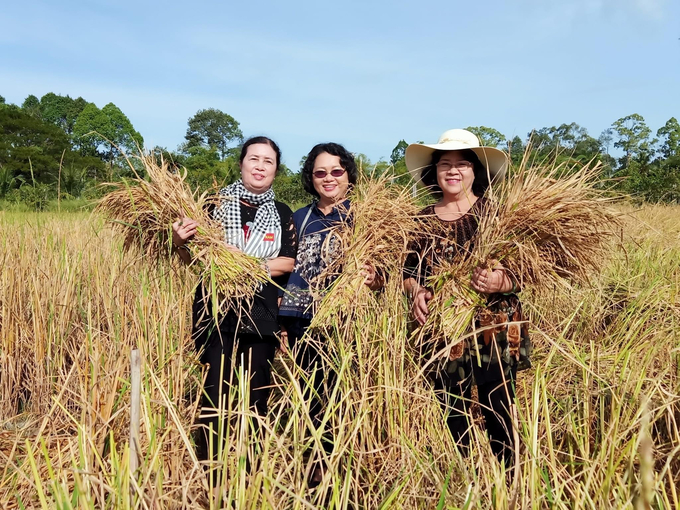
Experience harvesting rice. Photo provided by the character.
Viet's son once helped his father collect water hyacinths, but when he was preparing to take the university entrance exam, Viet suggested studying agriculture, but he refused. So now, even though Viet has retired, he is still worried that there will be no one to continue the story of seasonal rice culture. "In the near future, when the volunteer children come here, I will tell them that if they want to hear about seasonal rice and seasonal rice culture, they can come and listen anytime. When I no longer have the strength to speak, they will help me spread the word to future guests”.

Experience grilling snakehead fish using straws. Photo provided by the character.
Every time he was told about summer rice culture, he felt happy. An Giang University, Can Tho University, University of Social Sciences and Humanities regularly bring students down to learn. Over 90% of the students coming to his field are from the Khmer ethnic group. Most of the agricultural tools he collected are associated with seasonal rice culture which is also of the Khmer root. “Not only did those students come here for free, but they were also given drinks to see the tools of their ancestors, the first people to explore the Mekong Delta”.
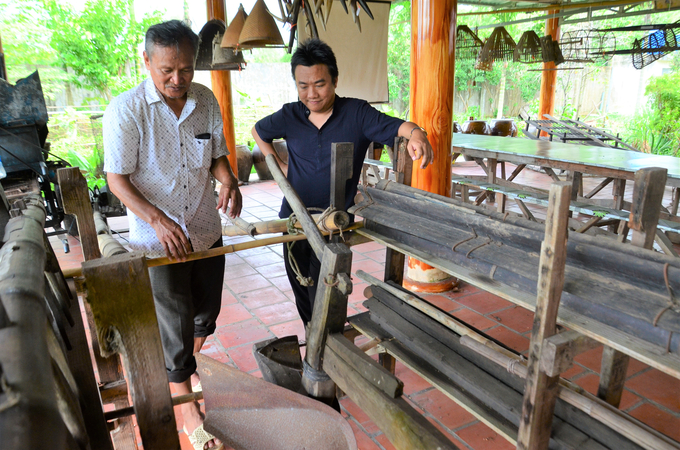
Le Quoc Viet introduced guests to ancient agricultural tools. Photo: Duong Dinh Tuong.
The output of the seasonal rice fields is only 1.7 - 2 tons/ha, but he is not saddened because of that reality. "I have to share the rice seeds with the birds and mice that come. Normally there are no pests in the fields, but when there are, their natural enemies would appear immediately. If the worm eats the leaves, the rice plant also has its own way of healing itself,” he jokingly said.

A moment of rest in the hut. Photo: Duong Dinh Tuong.
Le Quoc Viet has a dream. He wishes to have a successor so that he talk about seasonal rice culture and write books about it instead of having to directly tend to the field, as he is already old. “Currently I am selling VND 30,000 - 40,000 per kg of seasonal rice but many people still complain, maybe they don't understand what I do! When people eat for their health and only use a few kilograms of rice each month, they will think about seasonal rice. If everyone realizes that fact, seasonal rice will make a comeback".
Translated by Samuel Pham
![Turning wind and rain into action: [7] Early disaster warnings help marine farmers minimize losses](https://t.ex-cdn.com/nongnghiepmoitruong.vn/608w/files/news/2025/06/17/z6704423696987_15fd32ffc26d590d204d520c9dac6786-nongnghiep-142942.jpg)
(VAN) In recent years, thanks to early disaster warnings and forecasting, marine farmers in Khanh Hoa province have been able to reduce risks and losses, thereby improving production efficiency.
![Turning wind and rain into action: [5] Hue applies modern technology in disaster forecasting](https://t.ex-cdn.com/nongnghiepmoitruong.vn/608w/files/news/2025/06/17/z6704423696987_15fd32ffc26d590d204d520c9dac6786-nongnghiep-093938.jpg)
(VAN) In Hue city, modern technology has recently been applied in meteorological and hydrological forecasting and warning, helping to reduce the damage caused by natural disasters.

(VAN) A cutting-edge farming technique being implemented on an experimental ranch in Arizona's Sonoran Desert has already saved a billion gallons of water over five years, according to Civil Eats.

(VAN) Poultry and pig production and the environment can be boosted through enhanced water technology, according to new research.
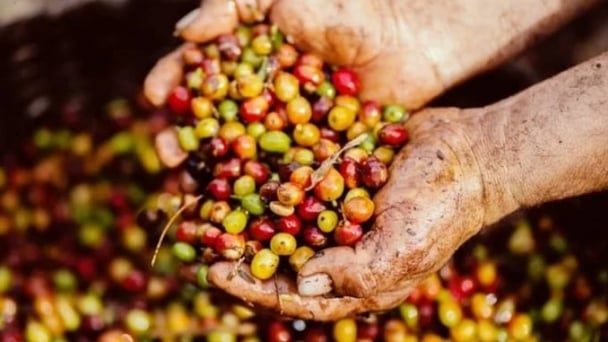
(VAN) Coffee prices on June 16, 2025 are unchanged. In Vietnam, local trading prices are holding steady, ranging around VND 112,000 – VND 112,500/kg.
![Turning wind and rain into action: [4] Bringing climate bulletins to remote and isolated areas](https://t.ex-cdn.com/nongnghiepmoitruong.vn/608w/files/linhnhp/2025/06/14/1152-z6704423696987_15fd32ffc26d590d204d520c9dac6786-nongnghiep-151141.jpg)
(VAN) The Vietnam Agriculture and Nature Newspaper interviewed Mr. Vu Thai Truong, Acting Head of Climate Change and Environment at UNDP Vietnam, to gain deeper insight into how climate bulletins are delivered to farmers.
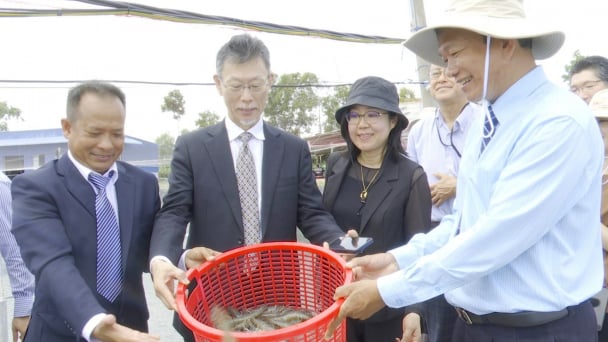
(VAN) In Tien Giang, a high-tech shrimp farm has developed a distinctive energy-saving farming model that has yielded promising results.